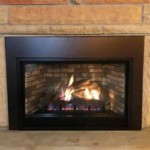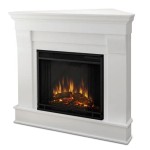Electric Fireplace Heater Energy Efficiency: A Guide to Heating Your Home Responsibly
Electric fireplaces have become increasingly popular in recent years, offering a cozy and inviting ambiance without the hassle of traditional fireplaces. However, concerns regarding energy efficiency often arise when considering electric heating options. While it is true that electric fireplaces can consume energy, understanding their energy efficiency and implementing certain practices can significantly reduce their impact on energy consumption and your energy bill.
Understanding Electric Fireplace Energy Consumption
Electric fireplaces operate by converting electrical energy into heat. The amount of energy consumed depends on the fireplace's wattage and the duration of use. A typical electric fireplace ranges from 1,000 to 1,500 watts, which is comparable to a standard space heater. To estimate energy consumption, multiply the wattage by the hours of operation. For instance, a 1,500-watt fireplace used for 5 hours daily consumes 7.5 kilowatt-hours (kWh) of electricity.
While electric fireplaces may consume energy, they offer several advantages in terms of efficiency compared to traditional fireplaces. Unlike traditional fireplaces, which lose a significant amount of heat through the chimney, electric fireplaces direct the heat directly into the room, minimizing heat loss. Additionally, electric fireplaces eliminate the need for wood or gas, reducing reliance on fossil fuels and minimizing emissions.
Factors Influencing Electric Fireplace Energy Efficiency
Various factors influence the energy efficiency of electric fireplaces. Understanding these factors can help you choose a model that suits your needs and optimize energy consumption.
1. Heating Capacity and Room Size
The heating capacity of an electric fireplace is measured in BTUs (British thermal units). A higher BTU rating indicates greater heating power. It is crucial to select a fireplace with a heating capacity that matches the size of the room you intend to heat. Oversizing a fireplace will result in excessive energy consumption, while undersizing will lead to insufficient heating. Consider the insulation and window efficiency of your room when determining the required heating capacity.
2. Energy Star Certification
Look for electric fireplaces with the Energy Star certification. Energy Star certified products meet strict efficiency standards, ensuring reduced energy consumption and lower operating costs. These fireplaces typically feature advanced technologies like high-efficiency heating elements and smart thermostats, optimizing energy use and maximizing heating output.
3. Heating Element Type
Electric fireplaces commonly employ two types of heating elements: resistive and infrared. Resistive heating elements use electricity to heat a coil, which in turn heats the surrounding air. Infrared heating elements directly emit infrared radiation, warming objects and surfaces in their path. While both types effectively heat a room, infrared heating elements are generally considered more energy-efficient due to their ability to directly heat objects instead of relying on air convection.
4. Thermostat Settings and Operation
Properly setting the thermostat is crucial for optimizing energy efficiency. Avoid setting the thermostat too high, as it will increase energy consumption. Use a programmable thermostat to adjust the temperature based on your schedule, allowing the fireplace to operate only when needed. Consider using a timer to limit usage during peak hours or when you are away from home.
5. Fireplace Design and Features
The design and features of an electric fireplace can also impact its energy efficiency. Opt for models with features like:
- Efficient Insulation: Well-insulated fireplaces minimize heat loss, improving efficiency.
- Smart Thermostat: A smart thermostat automatically adjusts the temperature based on room conditions and your preferences, minimizing unnecessary heating.
- Energy-Saving Modes: Some electric fireplaces offer energy-saving modes that reduce power consumption during periods of lower heating demand.
Energy-Saving Tips for Using Electric Fireplaces
In addition to choosing an energy-efficient fireplace model, implementing these tips can further reduce energy consumption:
- Maximize Natural Light: Let natural light into your home, reducing the need for artificial lighting. This can significantly reduce your overall energy use, including that of the fireplace.
- Insulate Your Home: Proper insulation reduces heat loss, making your home more energy efficient and reducing the need for excessive heating from your fireplace.
- Close Doors and Windows: During cold weather, keep doors and windows closed to prevent heat loss from the room where the fireplace is located.
- Use Window Coverings: Utilize curtains or blinds to minimize heat loss through windows, particularly during colder months.

Are Electric Fireplaces Energy Efficient We Love Fire

Are Electric Fireplaces Energy Efficient Direct Learning Center

Energy Efficiency Benefits Of Purchasing An Electric Fireplace Uintah Fireplaces

Lifeplus Small Electric Fireplace Heater Tabletop 13 5 Energy Efficient Indoor Space Portable Wood Cabinet 3d Flame For Home Decor Com

Electric Fireplace Energy Efficiency Results Most Efficient Wattage Btu For 117 Models

Are Electric Fireplaces Energy Efficient We Love Fire
The 6 Best Electric Fireplace Heaters Of 2024

Lifeplus Small Electric Fireplace Heater Tabletop 13 5 Energy Efficient Indoor Space Portable Wood Cabinet 3d Flame For Home Decor Com

Mythbusters Electric Fires Dimplex

How Energy Efficient Is An Electric Fireplace








